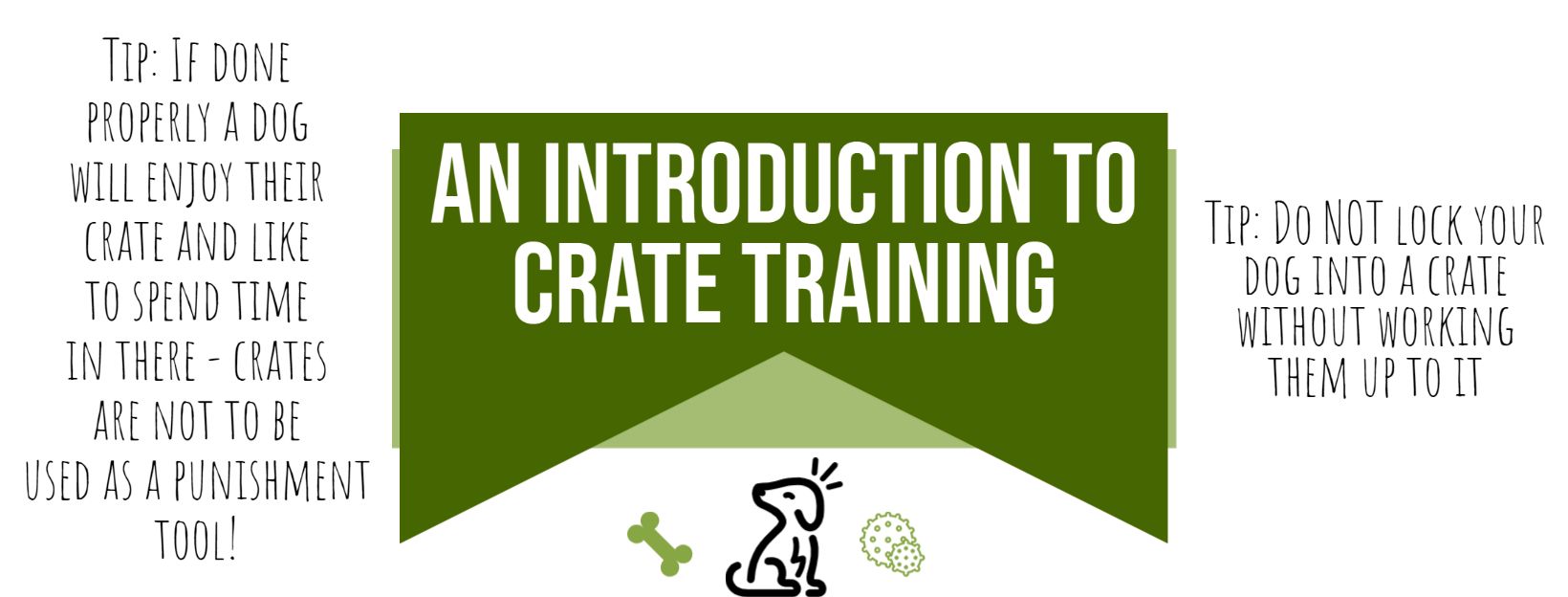
Spend some time each day working on the crate being a "good thing". Start with some yummy treats hotdog/cheese/chicken). Sit beside the crate with the door open. Toss a treat just inside the crate door. Let the dog go and eat it. Toss the next treat in a bit further. When they are going to the back of the crate to eat the treat, close the door for ½ a second... just close while the dog is eating and open again as they come out. Repeat this several times. Smile and talk happy talk to them.
Next close the door whilst the dog is eating the treat and wait 1 second before opening it. If they cry, you are going forward too fast. Open the crate before the dog has a chance to cry. Lots of praise as you open the door. Always let them come all the way out of the crate. You can have a brief play then toss another treat in and repeat the door closing exercise. Slowly increase the length of time the door is closed before you open it again. Only open it if the dog is calm and quiet. If they get a bit impatient and fussy, turn your head away. Do not look at them or say anything. When the dog quiets, then praise them and open the door. Vary the length of time the door is closed.
Sometimes 1 second, sometimes 5 seconds... Or whatever level you have worked up to.
Practice this exercise for no more than 5 minutes at a time, but practice many times a day, if possible. Stay right with them until they are calm and quiet in the crate with the door closed for 5 minutes.
Then proceed to move away from the crate. However, you have to go back to having the door closed for a very short time. So close the door, take one step away, step back and open the door before they cry. Keep working up to moving 5 feet away from the crate for 5 minutes in small increments as outlined above. Be variable. Don't respond to crying. If the dog cries out, just hold still without looking at them or talking.
If you find that they are getting louder and more stressed sounding with their crying, or you think they may need to go outside, make a sudden noise in another room... like closing a door or dropping a book... just enough to make them hold their breath and listen for a moment. In that pause, start talking to the dog and get to them as quickly as possible. Take the dog out, change something in the "picture" and regroup. DO NOT go to the dog and talk to them or look at them when they are crying (and I know they can really scream at times) or you will undermine all the work you are putting into teaching them to be alone and quiet. Since you have rewarded the dog (by going to them) after 2 hours of crying, it is likely that they may try crying that long (or longer) again. If you follow the steps outlined above, hopefully you can bypass the stress (on all of you) of all that crying. If you give in and go to them when they are crying you will be teaching that crying "works".
It is also very important to remember to maintain the “value” of your dog’s crate so they want to spend time there. We recommend feeding your dog in their crate, giving them tasty treats in there like Kongs or pigs ears and continue this for the whole time you wish to use a crate for your dog. Remember that a crate is a positive, safe space for your dog and should not be used for punishments or time-outs.
Remember:
- Oakwood’s dogs are NOT crate trained upon adoption. They have crates in their kennels that are open 24/7 for them to go to and from.
- We advise offering a crate whilst the dog is settling into the home. If they stop using it, leave it a week then remove the crate. They are a handy den for Bonfire night/ New Year if your dog is frightened of fireworks.
- Do NOT close your dog into its crate without building up the amount of time you leave them in there – any questions, text the numbers below or email us!
Watch our demo on how to begin crate training: